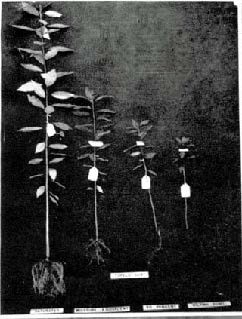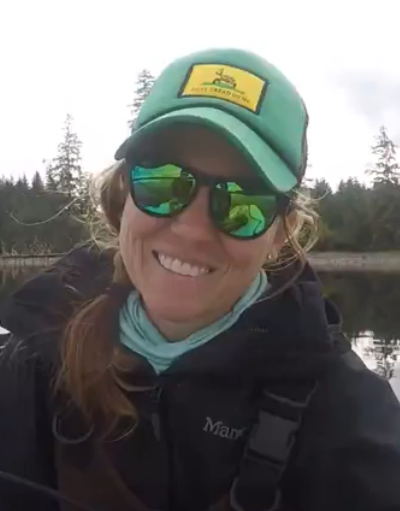
When you think of the Florida jungle, surely you imagine some sort of soupy swamp. And when you imagine a swamp on the lower Apalachicola River, you probably think of tupelo and cypress trees. These trees are able to handle longer bouts of floodwaters unlike hardwoods; in fact, they need it. This photograph shows the growth of tupelo saplings under different soil saturation levels, with the far-left sapling being totally saturated with water and moving towards the right of the photo, less and less saturated. These tupelo seeds thrive best in a full-on swamp bath. Tupelo have one heck of a growth spurt and out-compete bottomland hardwoods: their saplings drown in these watery conditions.
Let’s talk about the overstory, midstory and understory. The overstory is comprised of the tallest trees. The midstory are the trees that grow under the overstory, and you guessed it, the understory grows under the midstory. Biologists aren’t always the most creative when it comes to naming, but practicality comes into play. These different zones reflect a generational progression: overstory=grandparents, midstory=parents, and understory=children.
Currently the overstory in the Apalachicola floodplain swamp is still dominated by tupelo, cypress and pop ash. John Tracey, a UF forestry doctoral student working with our with the Slough Restoration Project, has established multiple tree survey sites in the Apalachicola floodplain that will be monitored for years to come. Finalizing scientific results is typically a very long and tedious process (don’t believe those TV shows that have lab results right after the commercial break).

However, John is already seeing a glimpse into the future. Standing in one of his survey sites, the understory and the midstory are not comprised of what would become the next generation of tupelo or cypress. It’s mostly comprised of bottomland hardwood species like elm and water hickory.
The Apalachicola River Basin is losing its swamps. Over a span of 1976 to 2004, USGS researchers Helen Light and Melanie Darst discovered there was a 14% loss of swamp area. Not only are we losing the total area but also the number of trees. Additionally Helen and Melanie found a 35% loss in the number of trees in the swamps.
How did this happen?
 The swamps are drying out, especially in summer. When the water levels are lower, the floodplain is cut off from the main river channel. Two main culprits are at play: channel erosion and low flow. Remember how tupelo saplings need a fully saturated swamp to grow rapidly? Now both the growth-stunted tupelo saplings and slow-growing bottomland hardwoods are killed during the deep floods of spring.
The swamps are drying out, especially in summer. When the water levels are lower, the floodplain is cut off from the main river channel. Two main culprits are at play: channel erosion and low flow. Remember how tupelo saplings need a fully saturated swamp to grow rapidly? Now both the growth-stunted tupelo saplings and slow-growing bottomland hardwoods are killed during the deep floods of spring.
What does this mean?
It likely means a decline in tree biomass and thus a reduced amount of leaf litter.
Why does this matter?
Tupelo leaf litter accounts for about 1/3 of all the leaf litter in the floodplain. Leaf litter is a huge energy source for the Apalachicola River and the Apalachicola Bay. It provides food and substrate for the entire food chain, from small microbes to mollusks and fish.
Where’s the good news???
Apalachicola Riverkeeper is conducting a Slough Restoration Project. This multi-year project will restore the connection of three slough systems in the Apalachicola River watershed during times of low flow by removing sediment plugs and reestablishing hydrologic connectivity. The project benefits will be multi-fold, the result being more freshwater and life-giving nutrients flowing through the river floodplain and East River into Apalachicola Bay and East Bay during times of low flow. Once complete, the current project could be a model for restoring other impaired slough systems along the lower river. The Apalachicola Bay depends on the river, its flooded floodplain, and its floodplain sloughs, which support the bay ecosystem with freshwater, nutrients and detritus.
Director of Outreach and Education
Citations:
Darst, Melanie & Light, Helen. (2008). Drier Forest Composition Associated With Hydrologic Change in the Apalachicola River Floodplain, Florida. https://pubs.usgs.gov/sir/2008/5062/pdf/sir2008-5062_low-rez.pdf
Richard E. Dickson, John F. Hosner, Neil W. Hosley, The Effects of Four Water Regimes Upon the Growth of Four Bottomland Tree Species, Forest Science, Volume 11, Issue 3, September 1965, Pages 299–305, https://doi.org/10.1093/forestscience/11.3.299


